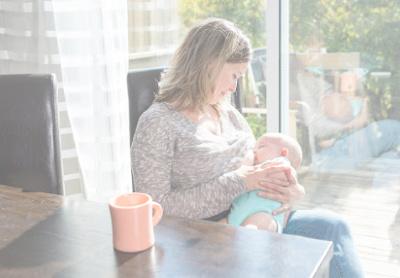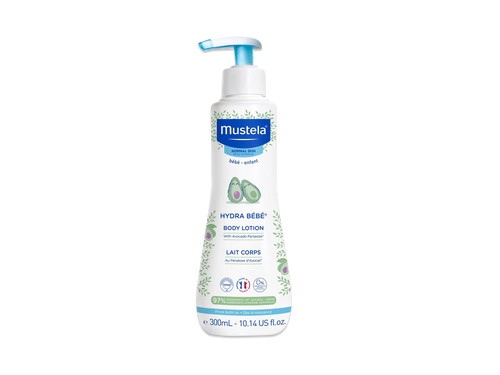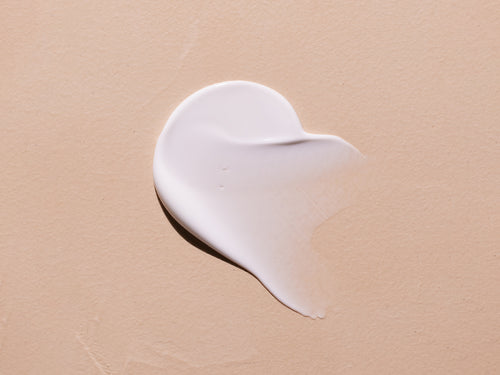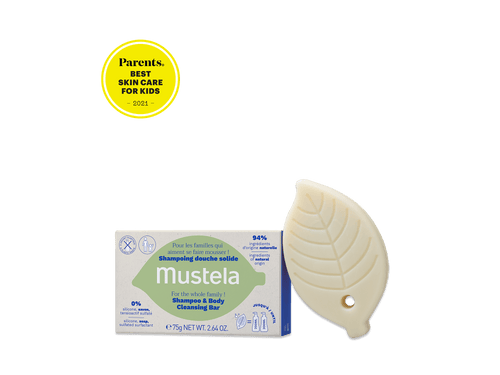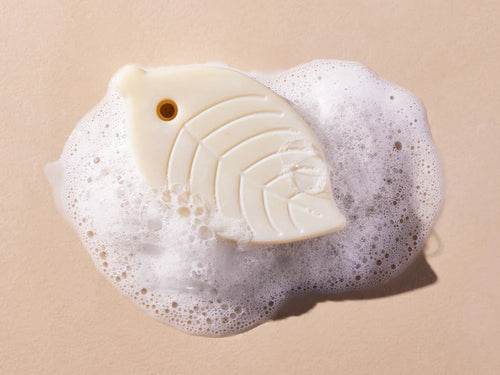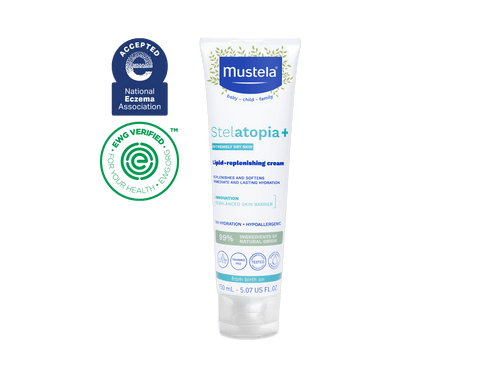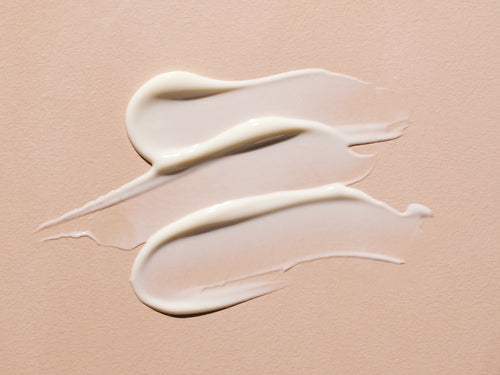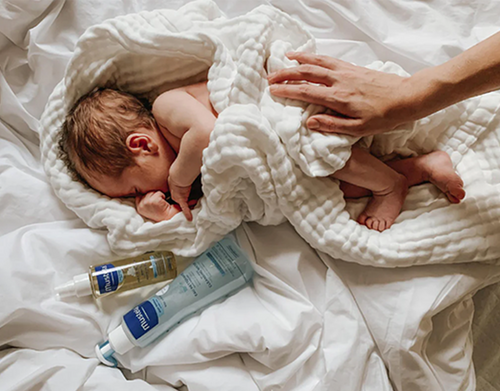There’s nothing quite like the connection you develop with your baby through breastfeeding. There’s also nothing quite like the pain, frustration, and discouragement of mastitis.
Mastitis, which is an inflammation or infection of the breast, is relatively common among breastfeeding moms. Whether you’ve already developed mastitis or are hoping to prevent it, you’re in the right place.
In this article, our experts at Mustela explain what causes mastitis as well as what you can do to treat and prevent it. But first, let’s start with the symptoms so you’ll know what to look for.
Symptoms Of Mastitis

While mastitis can develop at any point in your breastfeeding journey, it often strikes within the first couple of months after your baby is born, when your baby starts teething, or when you begin weaning your little one.
As a new breastfeeding mom, there’s a lot going on in your body and it might be hard to know what’s considered “normal.” What does mastitis look and feel like?
Watch for some or all of these symptoms:
- Swollen, painful breasts
- Breasts that are warm to the touch
- Redness in the breasts, often in a wedge shape
- A hard lump in the breast
- Fever
- Feeling unwell (like you have the flu)
- A burning feeling in your breasts (in general or while you’re breastfeeding)
If that list describes you, mastitis is probably the culprit. Next, we’re going to look at the causes of this uncomfortable condition, and then we’ll get straight to tips for kicking it to the curb!
Causes Of Mastitis

When your breasts don’t empty or drain properly, bacteria have more of a chance to grow, which can cause the inflammation and infection of mastitis.
For example, a blocked milk duct and the resulting backup of milk creates the perfect environment for mastitis to develop. The other reason bacteria might start to grow is if bacteria from your skin or your baby’s mouth enters your breast.
That’s the science behind mastitis, but what are the daily habits that tend to cause the milk backup and bacteria that lead to this painful condition? There are a few different factors.
1) Infrequent Feeding
If your baby has started sleeping through the night, that’s reason enough for any sleep-deprived parent to celebrate! But it also means you’re nursing less frequently and aren’t emptying your breasts as often.
A change in your baby’s sleep patterns, a new schedule, weaning, or travel might cause you to skip a feeding or nurse less frequently, which can contribute to mastitis.
2) Improper Latch
If your baby doesn’t latch onto your nipple well, they might not remove milk effectively. That could mean they aren’t getting enough milk and aren’t emptying your breasts (one risk factor for mastitis).
Plus, an improper latch is usually uncomfortable for you and can lead to sore or cracked nipples, which bring us to our next point.
3) Sore Or Cracked Nipples
In addition to simply being incredibly uncomfortable for you, a sore or cracked nipple allows more bacteria to enter your breast, increasing your chances of developing mastitis.
4) Pressure On Your Breasts
Pressure on your breasts (like shoving them into a tight-fitting bra) restricts milk flow, which may cause a blocked duct.
Other everyday things that might cramp your breasts’ style: wearing a baby carrier, your bathing suit, tight-fitting clothes, the strap of a bag, or your seat belt.
5) Previous Mastitis
You’re more likely to develop mastitis if you’ve had it in the past. If that’s you, you’ll want to be on the lookout for the symptoms we listed above and take extra steps to prevent infection.
Speaking of prevention, it’s time to get into the steps to treat and prevent mastitis so you can get back to nursing comfortably and feeling good!
Preventing And Treating Mastitis

Preventing mastitis before it even strikes is your best option. But we know that’s easier said than done! So, we’ve included several steps for prevention as well as treatment.
Whether you’re already dealing with mastitis or want to take every possible measure to prevent it, read on. We’re getting practical now!
Preventing Mastitis
1) Meet With A Lactation Consultant
To give you and your baby the best possible breastfeeding experience, meet with a lactation consultant from the very beginning.
These breastfeeding experts can check your technique and position as well as encourage you during the challenging moments of nursing.
2) Check Your Baby’s Latch
To ensure that your little one is removing milk well, make sure he or she is latching on correctly every time they nurse. Their mouth should be over part of the areola, and your nipple should be at the back of their mouth.
If they aren’t latched on correctly, take them off the breast by putting a clean finger into the corner of their mouth, and then try again.
3) Change Positions Frequently
Changing breastfeeding positions from one feeding to the next is beneficial for two reasons.
First of all, it helps empty your whole breast. Second, a change in position can make things more comfortable if you’re dealing with sore nipples.
4) Empty Your Breast
To keep milk flowing, empty your breast when you nurse. Let your baby finish one side before switching them to the other.
5) Take Care Of Your Nipples
Since sore and cracked nipples leave you susceptible to mastitis, caring for your nipples is important from day one! Apply a nipple cream — like Mustela’s Nursing Comfort Balm — after each feeding.

Made with 100% naturally derived ingredients, this fragrance-free balm moisturizes and protects nipples, eases discomfort, and helps to replenish and restore skin during and after breastfeeding.
Treating Mastitis
Already experiencing red, swollen, painful breasts? This section is for you.
First of all, talk to your doctor if you think you have mastitis. They will keep tabs on you and perhaps prescribe antibiotics to clear up the breast infection.
Then, keep applying nipple cream and follow these tips to stay as comfortable as possible and help your body heal.
1) Rest
We know that finding time to put your feet up can be hard as a brand-new mom. There are so many things to do!
But when your body is fighting something like mastitis, it deserves a little extra TLC. Sneak a nap in when you can, and enlist some extra help around the house so you can spend more time relaxing.

2) Drink Plenty Of Water
Drinking lots of water is a good idea for any breastfeeding mom, but it’s especially important if you’re in the thick of mastitis.
Get creative to ensure that you drink enough throughout the day — try tasty hot teas or lemon water to up your water intake.
3) Keep Breastfeeding
It’s normal to have concerns about breastfeeding while you’re dealing with mastitis. But let us put your mind at ease — nursing while you have mastitis will not harm your little one and may actually help you recover more quickly!
When you nurse, start your little one on the affected breast if you can. This will keep the milk moving. If it’s too painful, start on the healthy side and switch later.
4) Apply Warm And Cool Compresses
Before you breastfeed, wet a washcloth with warm water and put it on your affected breast. This will help your milk drain.
After breastfeeding, apply a cool pack (try an ice pack wrapped in a towel) to make you more comfortable and reduce swelling.
5) Change Breastfeeding Positions
We mentioned this in our tips on preventing mastitis, but it can be used to help clear up mastitis as well. If you’ve only breastfed in one breastfeeding position, experiment with a couple of new ones to help drain the entire breast.
6) Pump If Needed
If your little one isn’t very hungry and doesn’t empty your infected breast, hand express or pump after they finish eating. Emptying your breast is an important part of getting rid of mastitis.

7) Take Your Antibiotics
If your doctor prescribed antibiotics for your mastitis, take them and don’t stop taking them until you’re finished!
Even if you start to feel better, it’s important to finish taking what was prescribed to you. Stopping early can leave you prone to developing another infection in the future — exactly what you don’t want!
Also, remember that you can continue breastfeeding while you’re on antibiotics for mastitis.
8) Ask Your Doctor About Pain Medication
One of the big challenges of mastitis is simply getting through the discomfort.
It’s usually OK to take ibuprofen or acetaminophen to help you deal with the pain, but ask your doctor before taking any medication.

Goodbye, Mastitis!
Mastitis is no walk in the park. But with the right care, you’ll soon be back to your old self.
Keep breastfeeding as much as you can, apply warm and cool compresses, switch positions, take your antibiotics, and apply Nursing Comfort Balm to your sensitive nipples. You’ve got this!


